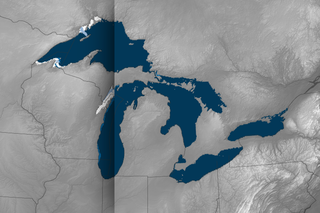In a record going back to 1850, Earth hasn't had a year colder than the 20th-century average since 1976—almost half a century.
The latest forecast says a major disruption of the polar vortex is on its way, but the stratosphere has been acting up for a while. Our bloggers explain what it might mean for U.S. weather.
Days with the most prominent Saharan dust correlated with fewer thunderstorms in the Atlantic and less rainfall across Puerto Rico, a pattern that has become more frequent over the past 40 years.
At ground level, the mobile lab can often measure emissions closer to the fire source, and it can be used at night when flying an aircraft near a wildfire may be hazardous. Lab results show that wildfire emissions vary based on whether the fire is flaming or smoldering.
Two new projects will provide useful observations to enhance monitoring and modeling of precipitation events. Each one will expand existing analysis data.
El Niño is near peak strength. Our blogger covers current and potential future conditions in the tropical Pacific.
The wind-driven Marshall Fire erupted into the most costly wildfire in Colorado history on December 30, 2021, evolving in one hour from a grass fire into a suburban firestorm that destroyed 1,084 homes and seven commercial properties.
The Madden–Julian Oscillation (MJO) influences atmospheric circulation and deep convection over the tropical Indian Ocean and Pacific Ocean on a 30–90 day cycle. A new study finds that global warming over the past century has made the MJO more predictable.
The Atlantic Meridional Overturning Circulation (AMOC) shapes climate, weather, and marine life. A cost-effective method can estimate the AMOC at a 22.5°S, a critical location at the edges of the South Atlantic subtropical gyre.
